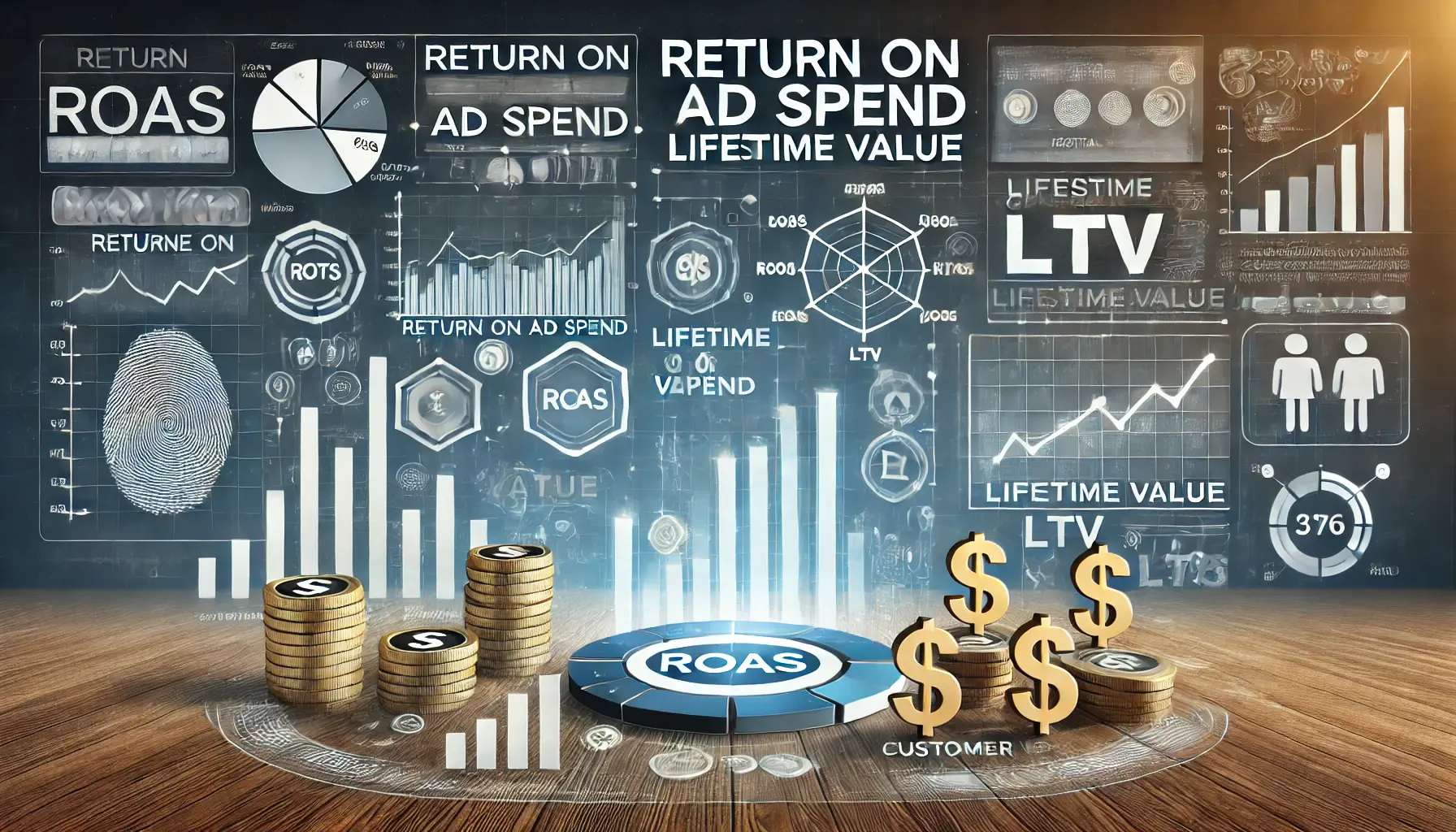It is important to understand your campaign performance when it comes to online advertising.
With the proper metrics, you’ll understand what is working for you, what needs fixing, and finally, how to get the most from your advertising budget.
In today’s fast-moving world of digital marketing, just airing a campaign isn’t enough; active tracking will enable you to optimize your results.
That is where campaign performance metrics come in.
These metrics give insight into the behaviors of your audience, how effective your ads are, and generally, what is working and not in your marketing strategies.
It is by diving deep into the numbers that you will know whether your ad campaigns are producing the intended conversions or sales.
It’s not just about the clicks or views; it’s about how those numbers translate into meaningful results for your business.
In this article, we’re going to break down some key performance metrics, explore how to analyze them, and understand how continuous improvement in ad campaigns is possible based on those insights.
If you want to raise the bar on campaign performance and optimize your advertising, then this is the place to be.
- Understanding Key Campaign Performance Metrics
- Optimization through Campaign Metric Analysis
- Advanced Metrics for Deepened Campaign Insights
- Common Pitfalls of Campaign Performance Analysis
- How to Continuously Improve Campaign Performance
- Closing Remarks: Campaign Performance Metrics Analysis
- Frequently Asked Questions: Campaign Performance Metrics Analysis
Understanding Key Campaign Performance Metrics
The road to mastering campaign performance starts with an understanding of the key metrics that define success.
Failure to do so might mean that you are leaving opportunities to optimize your campaigns and improve your return on investment (ROIReturn on Investment, a measure of the profitability of an investment.).
Let’s review some of the most important metrics you need to know when it comes to analyzing your campaign performance.

Visual representation of impressions and click-through rates (CTR) in digital advertising.
Impressions and Click-Through Rates (CTR)
Impressions are how many views your ad gets from users.
It’s one of those very basic campaign performance metrics that provide an idea about the visibility of your campaign.
Usually, impressions alone don’t really tell much.
That’s where the click-through rate (CTR) comes in.
CTR is the percentage of clicks per impression, meaning how many people actually clicked on your ad after having seen it.
A higher CTR means that the ad is relevant and interesting to the audience.
Formula: (Clicks ÷ Impressions) × 100
Example: Your ad has been seen by 10,000 people, and out of them, 500 clicked.
So, your CTR is 5%.
A high CTR indicates that your campaign is resonating with your target audience.
However, remember that CTR may differ between industries and across different platforms.
Therefore, it always makes sense to compare your performance against relevant benchmarks.
- Tip: Improve the CTR of your ad through refinements in messaging, design, and targeting.
- Best Practice: Test different versions of your ad at regular intervals to find out which one guarantees a higher CTR.
Mastering these performance metrics gives you control over your campaign’s outcomes and ROI. Ignoring them could mean missing out on optimization opportunities.

Visual representation of optimization through campaign metric analysis in digital advertising.
Optimization through Campaign Metric Analysis
After understanding the basic principles of campaign performance metrics like impressions and click-through rates (CTR), the next level is optimization.
You need to analyze these campaign performance metrics to make informed decisions and refine strategies for a better return on investment (ROI).
This section is about not just tracking but iteratively enhancing your campaigns to achieve greater results.
But where do you start optimizing?

Visual representation of identifying underperforming campaigns in digital advertising.
Identifying Underperforming Campaigns
Not every campaign will deliver star results, and that’s perfectly fine.
In optimization, what matters is knowing which part of your campaign is underperforming.
Some campaign performance metrics that may raise red flags include low CTR, low conversion rates, or high CPACost Per Acquisition, the cost associated with acquiring a customer through a campaign. (Cost Per Acquisition).
Tools like Google Ads’ Quality ScoreA score in Google Ads that indicates the relevance of your ads, keywords, and landing pages to the user. or Facebook Ads’ Relevance ScoreA metric used in Facebook Ads that measures how relevant your ad is to your target audience. provide insights into how your ads are perceived and how effectively they are performing.
Analyze which demographics or behaviors are leading to conversions and which are not, then allocate your budget accordingly.
- Tip: Use the Search Terms Report regularly to find underperforming keywords and remove them from your campaign.
- Best Practice: Segment your audience based on performance metrics to focus your budget on high-converting groups.

Visual representation of A/B testing for improved performance in digital advertising.
A/B Testing for Improved Performance
A/B testing is one of the most powerful methods for optimizing campaigns.
By testing two versions of an ad—be it headlines, visuals, or calls to action—you can identify which version resonates more with your audience.
The more you test, the more refined your campaign becomes.
With time, A/B testingA method where two versions of an ad are tested to see which performs better. can yield up to a 37% improvement in conversion rates, according to industry data.
- Tip: Test one variable at a time—headline, image, or CTA—so that you know exactly what worked in improving results.
- Best Practice: Run your A/B tests for at least one week to gather statistically significant data.

Visual representation of the role of negative keywords in optimizing campaigns.
The Role of Negative Keywords in Optimizing Campaigns
Negative keywords are essential for campaign optimization.
These are terms for which you do not want your ads to appear.
By excluding irrelevant searches, you ensure your ads are shown only to users who are more likely to convert, which minimizes your costs and enhances your campaign performance.
- Tip: Regularly review your Search Terms Report for new negative keywords to fine-tune your targeting.
- Best Practice: Create a list of common negative keywords in your industry to save ad spend on irrelevant clicks.

Visual representation of budget allocation based on performance data in digital advertising.
Budget Allocation According to Performance Data
Optimizing your ad spend is key to driving the best ROI.
After identifying high-performing ads and underperforming ones, the next step is to adjust your budget accordingly.
Increase the budget for campaigns or ad groups that are driving conversions, and reduce or pause those that are not.
Many advertising platforms, like Google Ads, offer automated bidding strategies that adjust your budget in real-time based on performance data.
- Tip: Use Google’s Target CPA bidding to automate budget allocation for high-converting campaigns.
- Best Practice: Periodically review your campaign budget and adjust for seasonality or new performance data.
Refining your strategies based on thorough metric analysis can be the difference between campaign success and wasted ad spend.

Visual representation of advanced metrics for deepened campaign insights.
Advanced Metrics for Deepened Campaign Insights
With experience in basic campaign performance metrics such as CTR and impressions, the next step will be toward some more advanced metrics that show deeper insights into campaign performance.
These advanced metrics provide further insights into long-term profitability, customer behavior, and the overall effectiveness of your advertising strategies.
Now that we have a fair understanding of the basic metrics that need tracking, let’s explore some of the most critical advanced metrics for gaining deeper insights into your campaign’s success.

Visual representation of ROAS and LTV concepts in digital advertising.
Return on Ad Spend (ROAS) and Lifetime Value (LTV)
Return on Ad Spend (ROASReturn on Ad Spend, a metric that measures the revenue generated for every dollar spent on advertising.) is one of the most important advanced metrics for determining the efficiency of your ad campaigns.
ROAS measures how much revenue is generated for every dollar spent on advertising.
For instance, if you spent $1,000 on a campaign and generated $5,000 in revenue, your ROAS would be 5:1.
By tracking ROAS, you can ensure that your ads are not just driving traffic but also producing the revenue that justifies the spending.
Lifetime Value (LTVLifetime Value, the total revenue expected from a customer over the duration of their relationship with a business.) defines the dollar value you can reasonably expect from a customer throughout their relationship with your company.
By comparing LTV against your customer acquisition cost (CACCustomer Acquisition Cost, the total cost to acquire a customer including marketing and sales expenses.), you’ll know whether your campaigns are ultimately profitable.
- Tip: Combine ROAS with LTV to complete the picture of your campaign’s long-term profitability.
- Best Practice: Use LTV and ROAS together when planning your long-term advertising strategies to ensure sustainable growth.
Visual representation of Tracking Customer Acquisition Costs (CAC) in digital marketing.
Tracking Customer Acquisition Costs (CAC)
Customer Acquisition Cost (CAC) is the overall cost of acquiring a new customer, including marketing, sales, and other overheads.
A low CAC compared to the LTV of a customer indicates that your campaigns are cost-effective.
It’s essential to balance CAC with LTV to ensure that you are not overspending on acquiring customers who will not bring enough value to your business over time.
- Tip: Track CAC on a per-channel basis to understand which platforms are most cost-effective for your ads.
- Best Practice: Compare CAC and LTV regularly to assess campaign efficiency and optimize budget allocation accordingly.

Visual representation of engagement metrics: views, interactions, and shares in digital marketing.
Understanding Engagement Metrics: Views, Interactions, and Shares
Engagement metrics like views, interactions, and shares give insight into how users are responding to your ads.
While impressions and clicks provide an idea of how many users see or click your ad, engagement metrics allow you to see how much interest or value your ad is generating.
These metrics are particularly important in social media and content-driven campaigns, where the quality of interactions is as valuable as the quantity.
- Tip: Use engagement metrics to measure audience sentiment and identify areas for improvement in your content.
- Best Practice: Track and optimize engagement rates on different platforms to ensure your message resonates with each specific audience.

Visual representation of attribution models: Single vs. Multi-Touch in digital marketing.
Attribution Models: Single vs. Multi-Touch
Attribution models help you understand which touchpoints in a customer’s journey contributed most to a conversion.
Attribution models can be of two major types: single-touch (which credits one touchpoint, usually the first or last interaction) and multi-touch (which distributes credit across multiple touchpoints).
These models are used to understand the buyer’s journey, enabling you to optimize each stage for better conversion rates.
- Tip: Use multi-touch attribution models to get a holistic view of your campaigns and customer journeys.
- Best Practice: Periodically review your attribution model to keep it aligned with your marketing goals and objectives.

Visual representation of cross-device metrics in digital marketing.
Cross-Device Metrics: How to Measure Effectiveness
With more users interacting across multiple screens, cross-device measurement has become essential.
Cross-device metrics measure how users engage with your ads on mobile, desktop, and tablet devices.
It’s important to track these interactions to ensure a seamless experience regardless of the device your audience is using.
- Tip: Review cross-device metrics to identify any gaps in user experience across different platforms.
- Best Practice: Optimize your ads and landing pages for each device type to provide a consistent experience and performance.
Metrics like ROAS and LTV provide a deeper understanding of long-term campaign profitability, making them essential for sustained growth.

Visual representation of common pitfalls in campaign performance analysis.
Common Pitfalls of Campaign Performance Analysis
Even when one understands the basic campaign performance metrics, there are common mistakes that occur during performance analysis.
These are things to avoid if you want to make your campaigns truly effective.
Let’s explore some of the most common mistakes marketers make when analyzing campaign performance and how to avoid them.

Visual representation of the pitfalls of over-reliance on a single metric.
Over-Reliance on a Single Metric
Being too focused on one metric of performance in a campaign can give a skewed picture of your campaign’s success—whether it’s CTR, impressions, or any other.
For example, a high CTR might seem to be positive, but if conversions or revenue remain low, the campaign’s effectiveness may not be as strong as it appears.
It’s essential to consider multiple metrics in combination to get a truer picture of your campaign’s performance.
- Tip: Always analyze your campaigns by using a mix of important performance metrics, such as CTR, conversions, CPA, and ROAS, to get a complete view.
- Best Practice: Use dashboards or analytics tools that aggregate multiple metrics into a comprehensive performance overview to avoid tunnel vision.

Visual representation of the impact of seasonality and external factors on marketing performance.
Ignoring Seasonality and External Factors
Many marketers fail to consider external factors such as seasonality, market trends, or global events when analyzing campaign performance metrics.
These factors can significantly affect user behavior, causing your metrics to spike or drop without accurately reflecting your campaign’s performance.
For example, an increase in traffic during the holiday season may not mean your campaign is outperforming but rather that there is more overall online activity.
- Tip: Adjust your campaign goals and expectations to account for seasonal fluctuations and external factors like holidays or major events.
- Best Practice: Regularly review your performance data in the context of broader industry trends or external factors to better understand its significance.

Visual representation of the dangers of misinterpreting data without context.
Misinterpreting Data Without Context
Data without context can be misleading.
For example, if you see that conversions spike, it may be a result of running a promotion or discount.
Without understanding the context of that promotion, you might attribute the success to something else.
Always keep the context of your data in mind to interpret it correctly.
- Tip: Document all promotions, changes in ad copy, and other events that may impact your campaign performance metrics.
- Best Practice: Use annotation features in your analytics tools to document major changes or events that may affect your metrics.

Visual representation of the risks associated with neglecting historical data.
The Danger of Not Revisiting Historical Data
Some marketers make the mistake of focusing too much on real-time data without revisiting their past data.
Comparing your campaign performance over time can help you spot trends and patterns that may have been overlooked, which can significantly improve decision-making.
Historical data can show how your campaigns performed in different periods and whether previous optimizations were successful.
- Tip: Regularly review your historical data to identify trends over long-term intervals and analyze whether past changes had any effect.
- Best Practice: Set aside time each quarter to conduct a deep-dive analysis of your historical campaign performance data.

Visual representation of the effects of ad fatigue and frequency on audience engagement.
Overlooking Ad Fatigue and Frequency
Running the same ad for an extended period can lead to ad fatigue.
High ad frequency can also contribute to this, as users may see the same ad too many times.
Both can result in diminishing returns on your ad spend.
- Tip: Monitor your ad frequency metrics and refresh your campaigns by rotating ads or updating creatives to keep your audience engaged.
- Best Practice: Use frequency capping to ensure users don’t see your ad more than a certain number of times within a set period to avoid ad fatigue.
Avoid common mistakes like over-reliance on a single metric, ignoring seasonality, and misinterpreting data without context to ensure accurate analysis.

Visual representation of strategies for continuously improving campaign performance.
How to Continuously Improve Campaign Performance
In the world of digital marketing, optimization of your campaigns is an ongoing process.
There’s always room for improvement, and through constant refinement of strategies based on campaign performance metrics, you will realize better results over time.
But how do you make sure that your campaigns remain effective in light of changes within the market?
Here are some tips for continuously optimizing your campaign performance.

Visual representation of the importance of setting realistic and measurable goals.
Setting Realistic and Measurable Goals
Setting realistic, achievable, and measurable goals based on your campaign performance metrics allows you to track performance and make adjustments in areas where you may be coming up short.
Your goals should be aligned with your business objectives and define exactly what results you want to achieve, whether it be increasing conversions, improving click-through rates, or lowering customer acquisition costs.
- Tip: Take each of your overall business objectives and break them down into granular, tangible goals that you can conceptualize and measure.
- Best Practice: Apply SMART goals (Specific, Measurable, Attainable, Relevant, and Time-bound). This will guarantee that the campaign strategy is clear and focused.

Visual representation of leveraging automation tools in digital marketing campaigns.
Leveraging Automation Tools for Campaign Adjustments
Automation is a powerful tool for optimizing campaigns.
Platforms like Google Ads and Facebook Ads offer automated bidding strategies that automatically adjust your campaigns based on real-time campaign performance metrics.
Automation can help optimize bids and budgets, and even customize ads based on performance, all while saving time and resources.
- Tip: Leverage automated bidding strategies, such as Google’s Target CPA or Target ROAS, to get the most value within your budget.
- Best Practice: Regularly monitor automated campaigns to ensure they continue to align with your larger marketing objectives and make necessary adjustments.

Visual representation of audience segmentation in digital marketing.
Audience Segmentation for Better Targeting
Understanding your audience is crucial for any campaign to succeed.
Audience segmentation allows you to group customers into distinct categories based on behaviors, demographics, or interests, enabling you to show personalized ads to different segments.
By incorporating audience segmentation into your campaigns, you can ensure that each group receives messages that resonate with them, improving engagement and overall campaign performance.
- Tip: Use audience insights from Google Analytics or Facebook Insights to identify high-performing segments and target them with personalized ads.
- Best Practice: Continuously refine your audience segments based on new data and campaign performance metrics to improve targeting and conversion rates.

Visual representation of regular reporting and performance monitoring in digital marketing.
Regular Reporting and Performance Monitoring
Consistent reporting and performance monitoring are essential for long-term campaign success.
By periodically reviewing your campaign performance metrics, you can understand what works, what doesn’t, and what may need adjustment.
It also helps create a data-driven foundation for making informed decisions on future campaigns.
- Tip: Automate your reports to regularly track key performance metrics, such as performing weekly or monthly performance reviews.
- Best Practice: Leverage tools like Google Data Studio or Tableau to present comprehensive reports that highlight trends and actionable insights for your campaigns.
Regular refinement and testing are essential for sustained campaign success. Set measurable goals and leverage automation for better results.

Visual representation of closing remarks on campaign performance metrics.
Closing Remarks: Campaign Performance Metrics Analysis
Mastering campaign performance metrics is key to success in today’s fast-paced digital marketing world.
From basic metrics like impressions and click-through rates to deeper insights such as ROAS, LTV, and audience segmentation, having a sophisticated understanding of your campaigns’ performance will drive long-term growth and profitability.
These metrics provide data, step by step, for fine-tuning your strategy, optimizing resource use, and maximizing returns on investment.
Optimizing campaigns is not a one-time event but an ongoing process that requires continuous monitoring and adjustment.
Setting measurable and realistic goals ensures that your campaign has clear direction.
With automation tools, managing campaigns becomes more efficient, as your ads perform optimally at all times.
Additionally, leveraging audience segmentation allows for better targeting, ensuring that the right message reaches the right audience at the right time.

Visual representation of key takeaways in digital marketing.
Key Takeaways
- Understanding and regularly analyzing key campaign performance metrics is essential for identifying opportunities for optimization.
- Advanced metrics such as ROAS, LTV, and CAC provide deeper insights into the long-term profitability and effectiveness of your campaigns.
- Automation tools and regular monitoring ensure that campaigns stay aligned with your marketing goals and make real-time adjustments when needed.
- Audience segmentation allows for more precise targeting, improving engagement and overall performance by delivering personalized messages to different segments.

Visual representation of the journey of continuous betterment in digital marketing.
Continuous Betterment: The Path to Success
The journey to achieving and sustaining high-performing campaigns involves continuous learning, testing, and refinement.
Data from campaign performance metrics forms a feedback loop, allowing you to continually adjust your campaigns based on changing market conditions.
Avoid common pitfalls—such as relying on a single metric or failing to account for external factors—and you’ll develop a solid strategy that drives growth.
As the digital marketing landscape evolves, staying informed and adapting to changes is crucial.
Whether you’re setting up new campaigns or optimizing existing ones, focusing on key performance indicators (KPIs) ensures that your marketing efforts remain efficient, effective, and profitable in the long run.
Mastering campaign performance metrics is key to optimizing resource use and achieving long-term marketing success.

Visual representation of frequently asked questions regarding campaign performance metrics.
Your campaigns can be managed by an agency specialized in Google Ads, check out our service page.
Frequently Asked Questions: Campaign Performance Metrics Analysis
Here are some of the most frequently asked questions about campaign performance metrics and how they affect your digital marketing strategies.
These questions and answers provide insights into how to optimize and analyze your campaigns for better performance.
Key metrics to track include impressions, click-through rates (CTR), conversions, cost per acquisition (CPA), return on ad spend (ROAS), and lifetime value (LTV).
These metrics are essential for optimizing performance and ensuring a successful overall campaign.
Audience segmentation allows you to serve targeted ads to individual groups, increasing relevance and engagement.
By targeting segments effectively, you improve campaign performance, leading to more conversions and better outcomes from your marketing efforts.
Automation tools streamline campaign management by automatically adjusting bids, budgets, and targeting based on real-time campaign performance metrics.
This saves time and ensures that your campaigns are optimized, improving overall efficiency and effectiveness.
ROAS (Return on Ad Spend) measures the revenue generated for every dollar spent on ads.
It’s important because it helps assess campaign effectiveness, ensuring your advertising spend leads to profitable outcomes.
Campaign performance should be reviewed regularly—weekly or monthly—depending on the size and goals of the campaign.
Frequent reviews help identify trends and make necessary adjustments to sustain improvements over time.
Seasonality and external factors, such as holidays or global events, can influence metrics like traffic and conversion rates.
It’s important to account for these factors when analyzing performance to avoid misinterpretation of your data.














